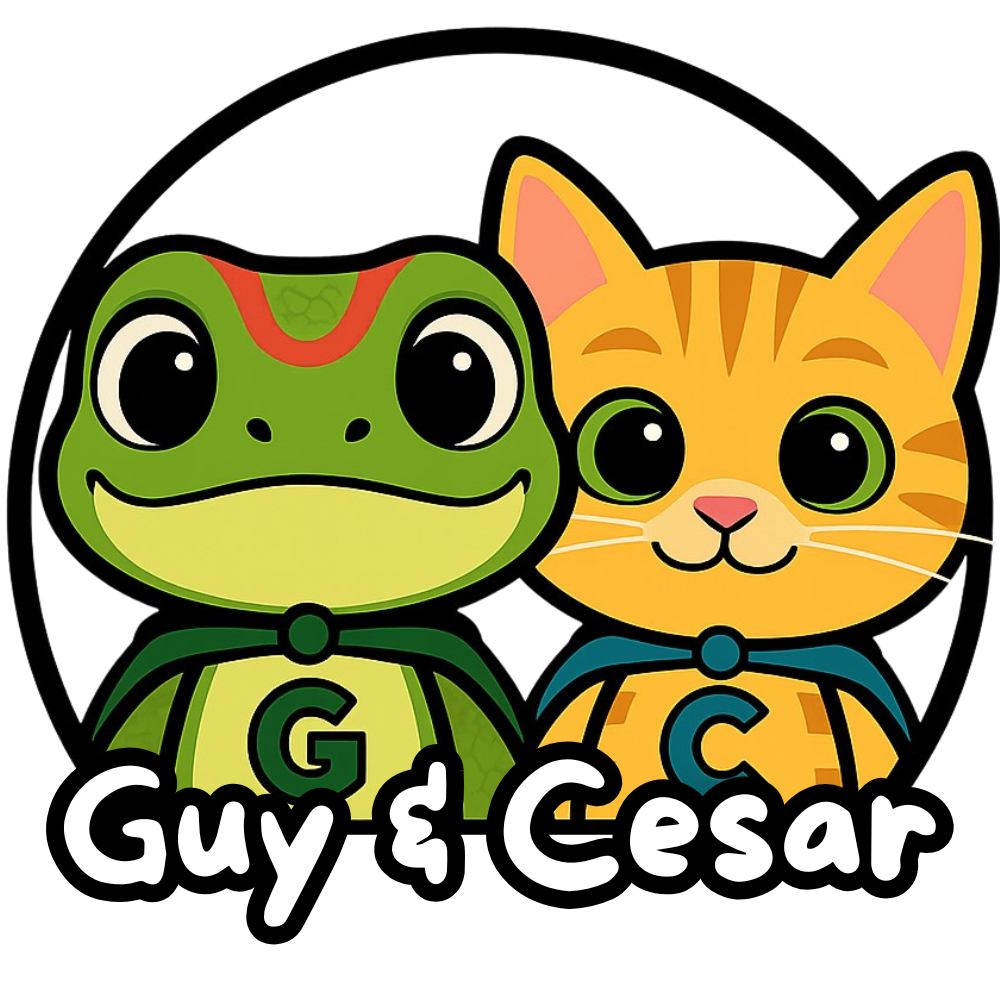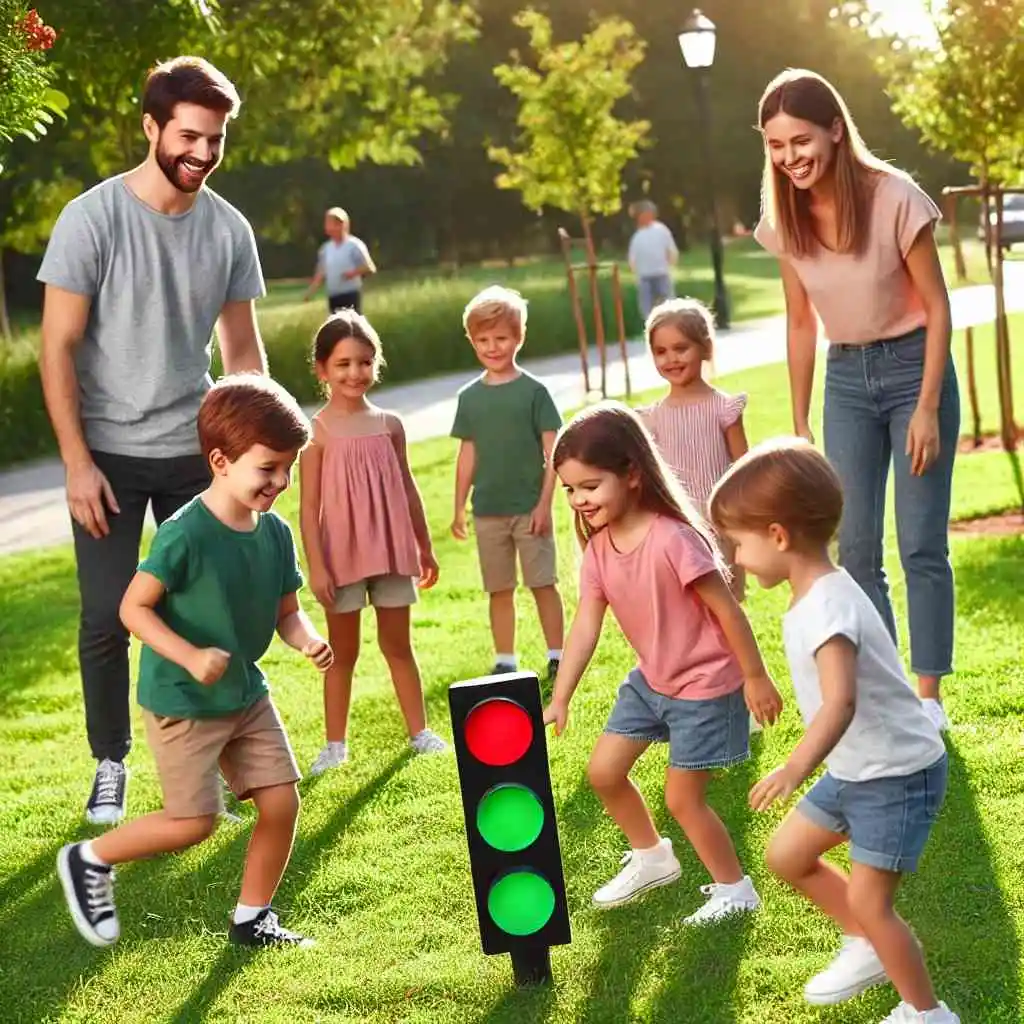Creative Safety-Themed Games
Teaching safety to children can be both fun and educational with the right approach. One of the best ways to engage kids is through creative safety-themed games. These games are not only entertaining but also provide valuable lessons that can stick with them for life. Here are some fun and easy-to-implement game ideas that you can try at home or in the classroom.
Safety Scavenger Hunt
A Safety Scavenger Hunt is an exciting way to teach children about different safety rules and items around the house or school. You can create a list of safety-related items for children to find, such as smoke detectors, first aid kits, and fire extinguishers. Include items related to personal safety, like helmets and seat belts, as well. Give each child a list and a bag to collect small items or take pictures of larger items.
To add more fun, you can set a timer and make it a race to see who can find all the items first. As they find each item, take a moment to explain its importance and how it keeps them safe. This game not only teaches children about safety but also helps them become more aware of their surroundings. It’s a fantastic way to combine learning with play, making safety education memorable and enjoyable.
Emergency Drill Role-Play
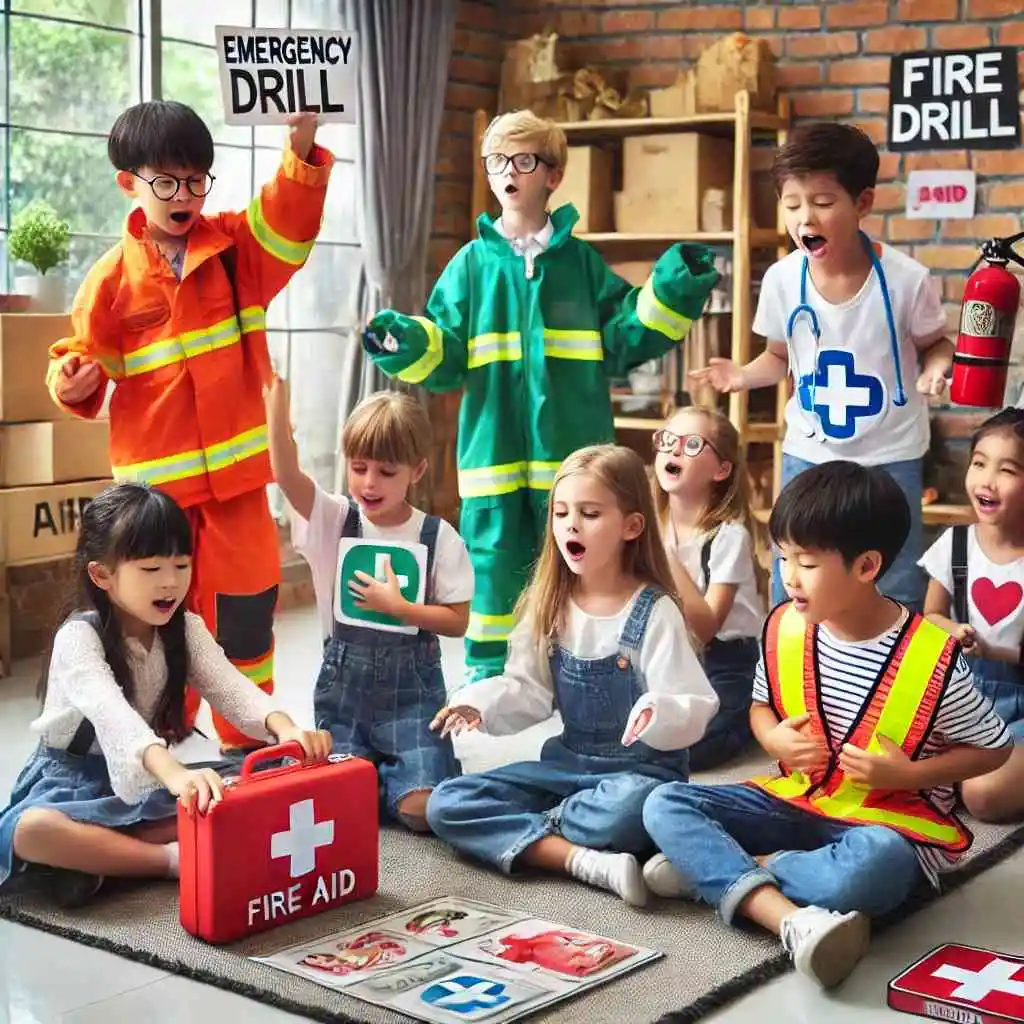
Role-playing is a powerful tool for teaching children how to react in emergency situations. Create a game where children act out different emergency scenarios, such as a fire drill, earthquake, or someone getting hurt. Assign roles to each child, like the person calling for help, the one checking for hazards, and the person using a first aid kit.
You can use props and costumes to make the role-play more engaging. For instance, use a toy phone for calling emergency services or a bandage for practicing basic first aid. Guide the children through each step of the emergency response process, explaining what they should do and why. After the role-play, discuss what went well and what could be improved.
This game helps children understand the importance of staying calm and following safety procedures during emergencies. It also builds their confidence, knowing they have the skills to handle unexpected situations. Plus, they get to have fun pretending to be heroes, which is always a hit with kids.
Safety Simon Says
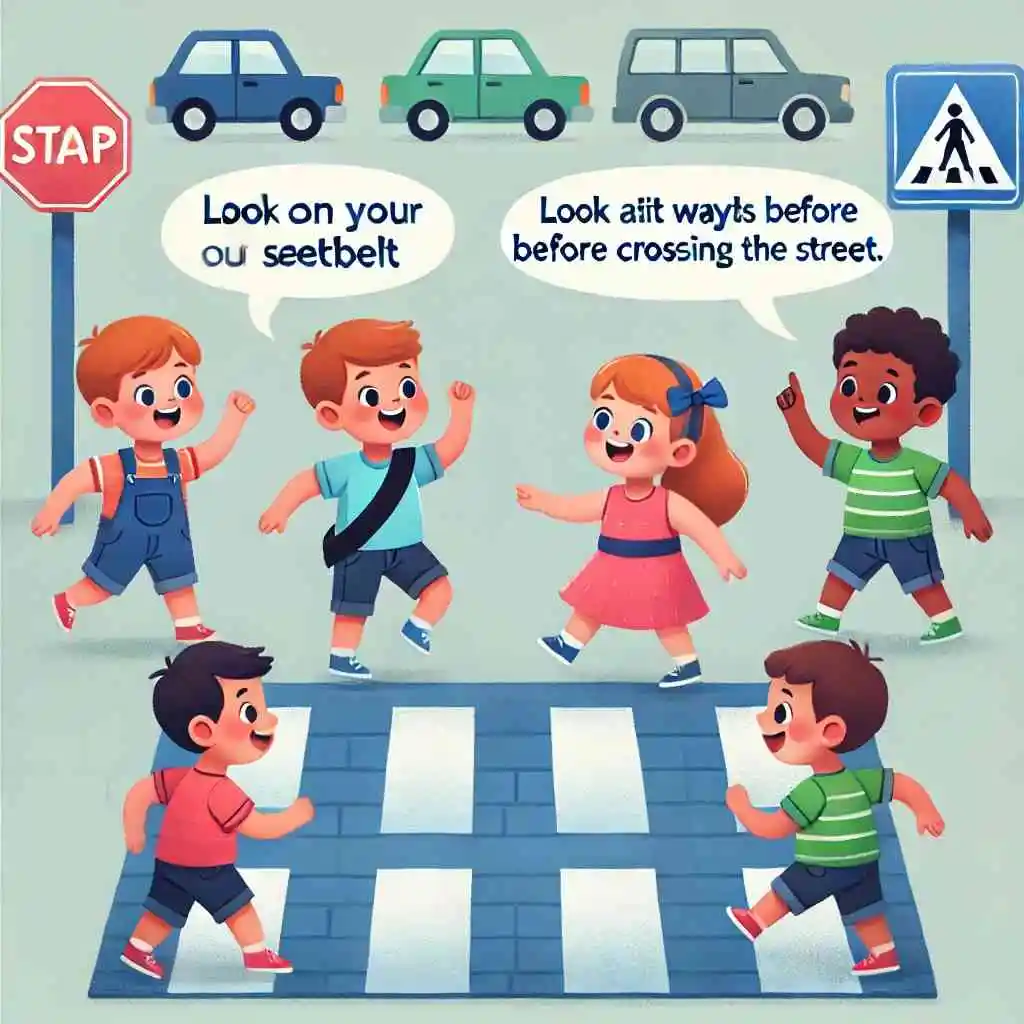
Safety Simon Says is a twist on the classic game Simon Says, where the focus is on safety actions. You act as Simon and give safety-related commands, such as “Simon says, put on your seatbelt,” “Simon says, stop, drop, and roll,” or “Simon says, look both ways before crossing the street.” The children must only follow the commands that start with “Simon says.”
If a child follows a command without “Simon says,” they are out for that round. This game not only teaches children various safety actions but also helps them improve their listening skills and ability to follow instructions. It’s a fun way to reinforce safety habits in a playful and interactive manner.
To make the game more challenging, you can speed up the commands or add more complex safety actions. You can also switch roles, allowing children to take turns being Simon and coming up with their own safety commands. This variation encourages creativity and helps reinforce the safety lessons even further.
Traffic Light Game
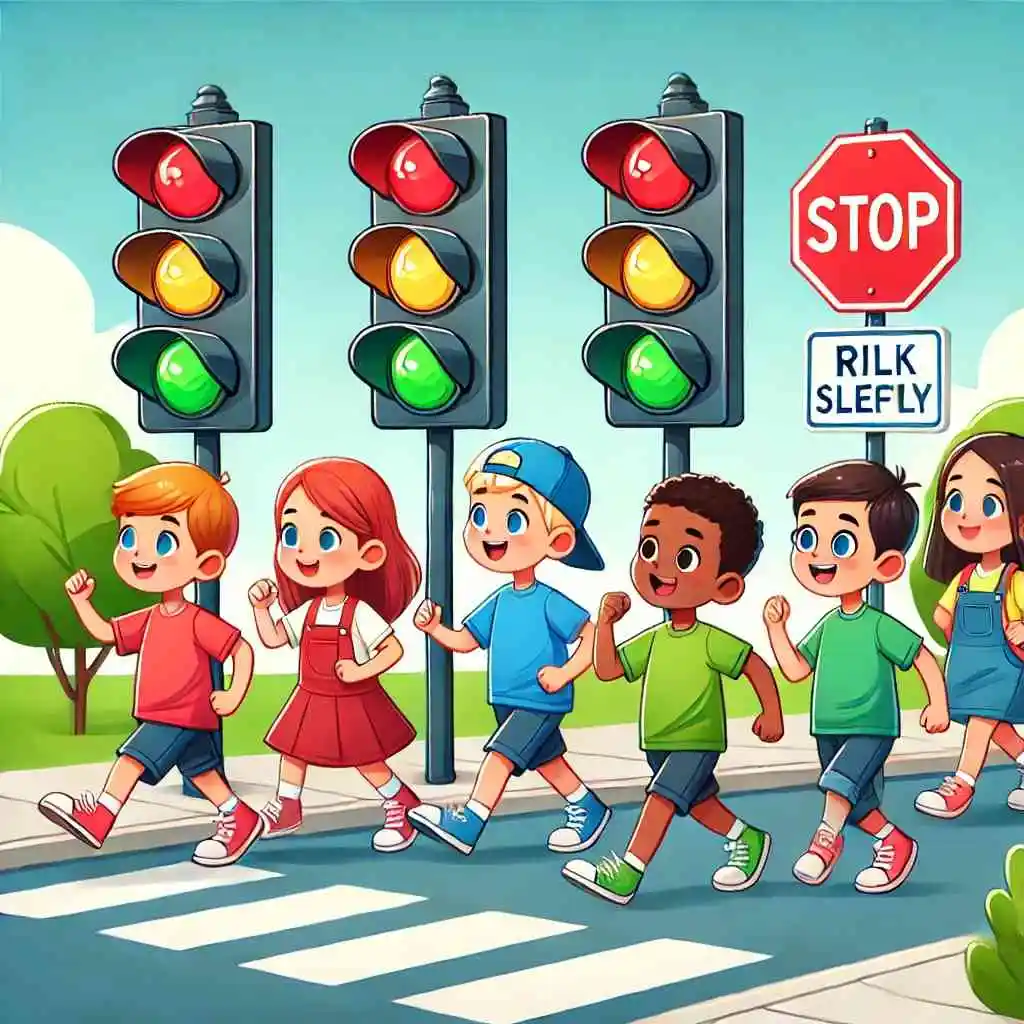
The Traffic Light Game is a simple yet effective way to teach children about road safety and the importance of following traffic signals. Create a large traffic light out of cardboard or use a printed version, and explain the meaning of each color: red for stop, yellow for slow down, and green for go. You can also use red, yellow, and green paper plates for this game.
Have the children stand in a line, and when you hold up the green light, they walk or run. When you switch to yellow, they must walk slowly. When you show the red light, they must stop immediately. This game teaches children to pay attention to traffic signals and understand their meanings. It also helps improve their reaction time and listening skills.
To add more fun, you can play music while they move and stop the music when the red light is shown. This version combines the classic game of musical statues with the traffic light game, making it even more engaging. You can also discuss other traffic safety rules, like looking both ways before crossing the street, as part of the game.
Safety Charades
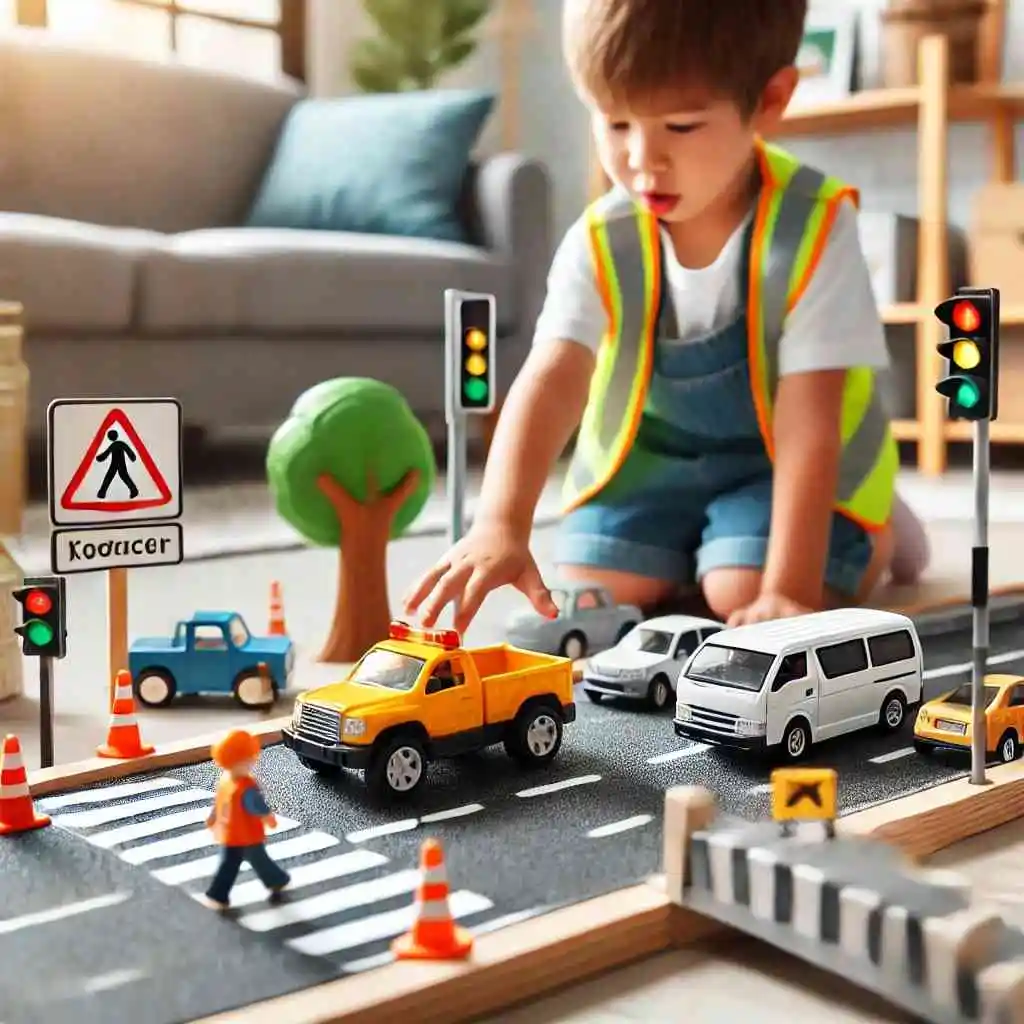
Safety Charades is a lively and interactive game that encourages children to act out different safety scenarios. Write down various safety actions or situations on slips of paper, such as wearing a helmet, washing hands, or using a crosswalk. Place the slips in a hat or bowl, and have each child take turns drawing a slip and acting out the action without speaking.
The other children must guess what safety action is being performed. This game not only reinforces safety practices but also encourages teamwork and communication. It’s a great way to get children moving and thinking creatively about safety.
To make the game more educational, you can discuss each safety action after it’s guessed correctly, explaining why it’s important and how it helps keep them safe. This discussion helps reinforce the safety lessons and ensures that children understand the significance of each action.
Conclusion
Creative safety-themed games are an excellent way to teach children important safety lessons in a fun and engaging manner. Whether it’s a Safety Scavenger Hunt, Emergency Drill Role-Play, Safety Simon Says, the Traffic Light Game, or Safety Charades, these activities help children learn and retain valuable safety information. They also promote active participation, critical thinking, and teamwork. So, gather your little ones and start playing these safety games today – they’ll have a blast while learning how to stay safe!
Using Toys and Props for Teaching: Making Learning Fun and Effective
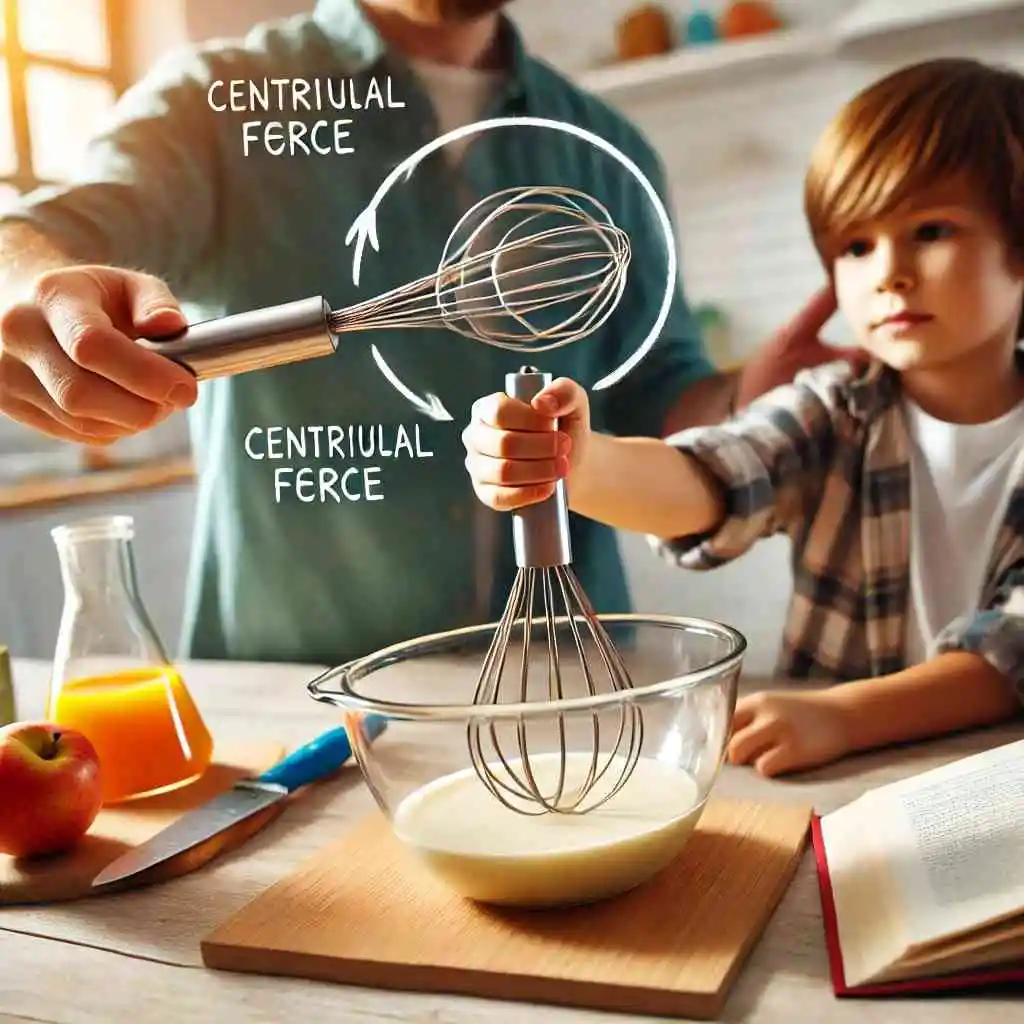
Toys and props can transform the way children learn, turning education into an engaging and enjoyable experience. You probably already have a treasure trove of teaching tools at home, hiding in plain sight. Everyday items and favorite toys can become powerful educational props. Let’s dive into some fun ways you can use toys and props to make learning more interactive and memorable.
Making Learning Playful with Favorite Toys
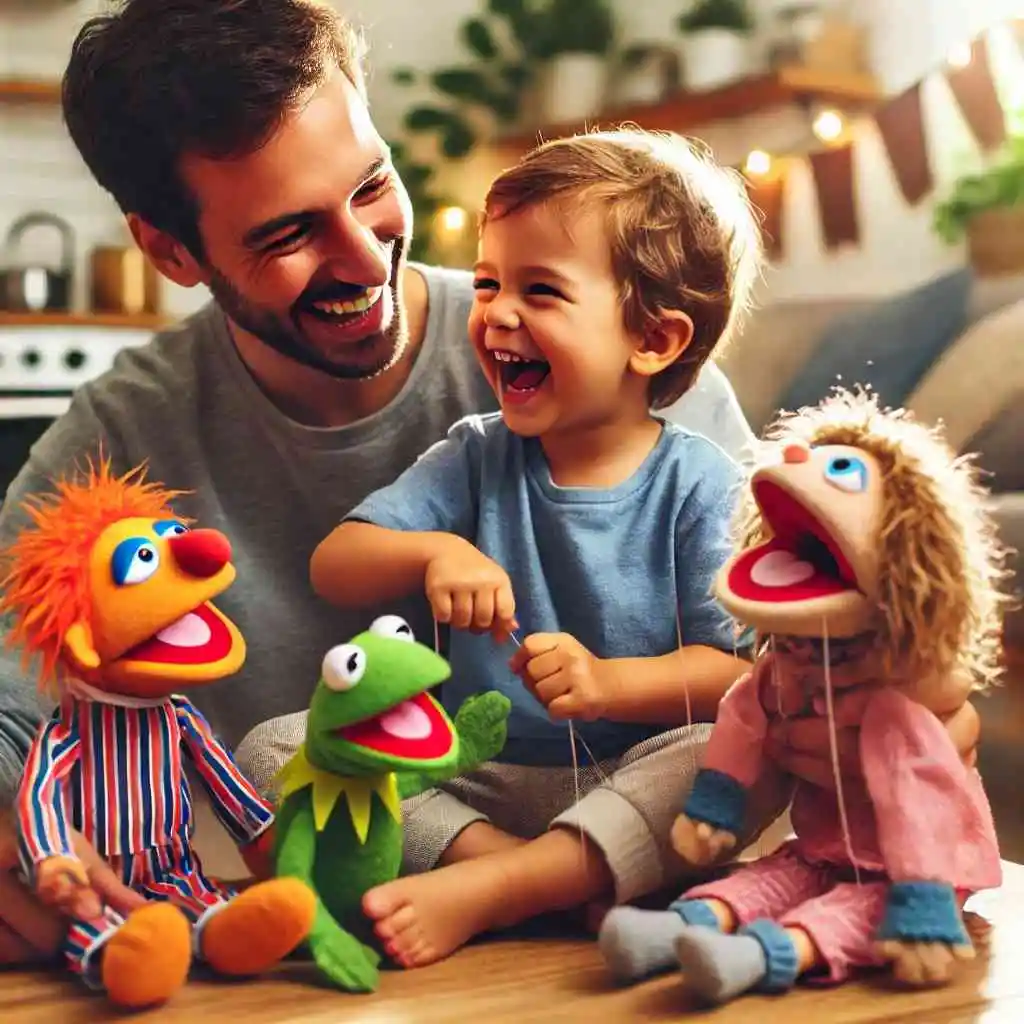
One of the easiest ways to incorporate learning into playtime is by using your child’s favorite toys. Action figures, dolls, and stuffed animals can become characters in educational scenarios. For instance, you can use a toy car to teach about road safety. Set up a mini traffic scene and explain the importance of looking both ways before crossing the street. This way, your child learns a valuable lesson while having fun with their favorite toy.
Teddy bears and dolls can also be helpful when teaching emotional intelligence. You can create scenarios where the toys experience different emotions. Ask your child how the toy might feel and what they can do to help. This not only teaches empathy but also helps children understand their own emotions better.
Creating Educational Adventures with Props
Props can turn any ordinary lesson into an adventure. Think about creating a pirate treasure hunt to teach math skills. You can hide “treasures” around the house and create a map with simple math problems that need to be solved to find each clue. This method makes learning math feel like a game, keeping your child excited and engaged.
Another idea is using kitchen utensils to teach science concepts. For example, a whisk can demonstrate the concept of centrifugal force. Show your child how the whisk spins and explain how the force pushes things outward. Simple experiments like this make abstract concepts more concrete and understandable.
Bringing Stories to Life with Puppets
Puppets are fantastic props for teaching through storytelling. You can create characters to act out different scenarios, making lessons more relatable and easier to remember. For example, you can use a puppet show to teach social skills. Create a story where the puppets encounter a problem, like sharing toys, and show how they resolve it. This method makes the lesson more interactive and enjoyable.
You can also use puppets to introduce new concepts. If you’re teaching about different cultures, create a puppet from that culture and let it tell your child about its traditions and customs. This not only makes the lesson more engaging but also fosters an appreciation for diversity.
Using Everyday Objects as Learning Tools

You don’t need to buy special educational toys to teach effectively. Everyday objects can be just as useful. For instance, a simple ball can teach physics concepts like gravity and momentum. Show your child how the ball falls to the ground and explain why it happens. You can also use the ball to demonstrate how objects move and stop.
Household items like cups and spoons can be used to teach counting and sorting. Ask your child to sort the spoons by size or count the cups. These activities turn mundane tasks into learning opportunities. Plus, they help your child develop fine motor skills and hand-eye coordination.
Creating a Fun Learning Environment
The key to using toys and props effectively is to create a fun and relaxed learning environment. You want your child to see learning as an enjoyable activity rather than a chore. Encourage curiosity and let your child take the lead in exploring new concepts. This approach fosters a love for learning that will last a lifetime.
Incorporate a variety of toys and props to keep things interesting. Rotate toys and introduce new props to keep your child engaged. Remember, the goal is to make learning fun and interactive. By doing so, you’ll help your child develop a positive attitude toward education.
Encouraging Imagination and Creativity
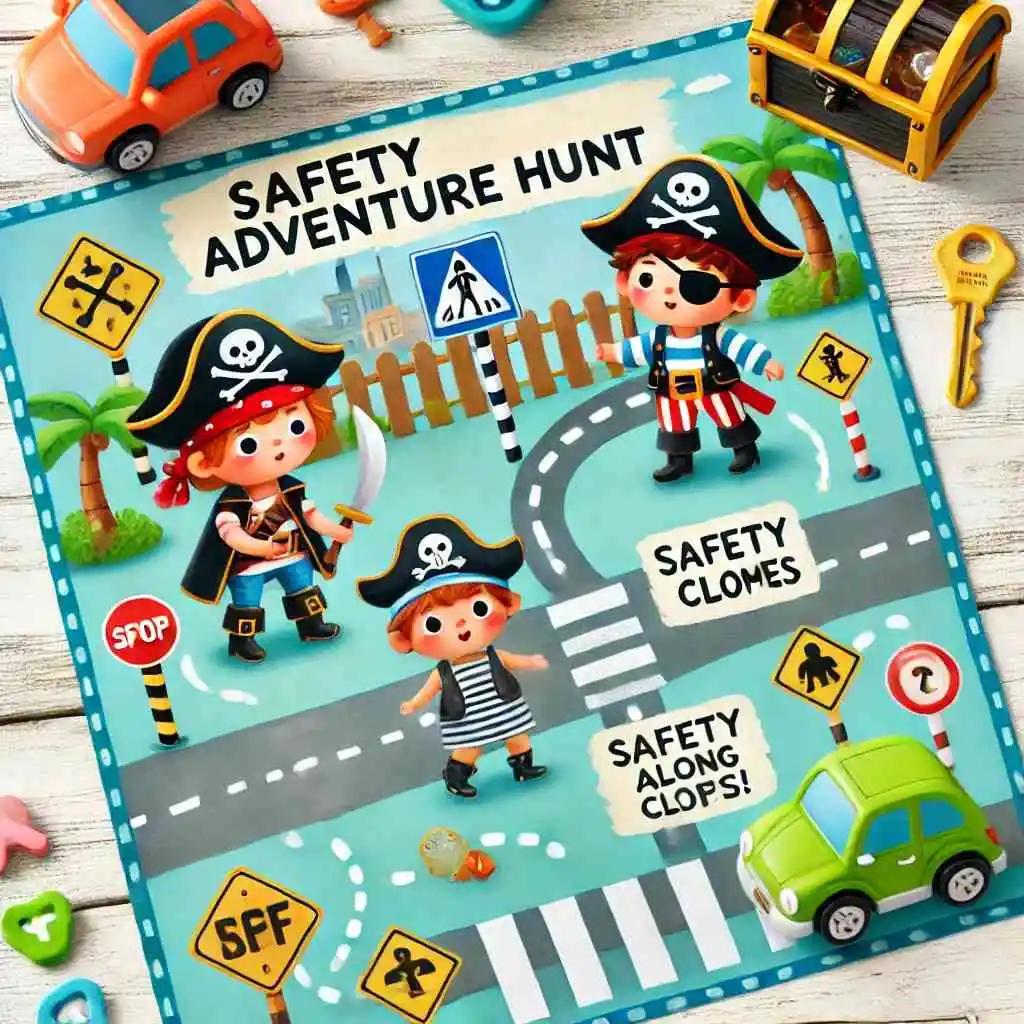
Using toys and props for teaching also encourages imagination and creativity. When children use toys to learn, they often come up with their own stories and scenarios. This creativity is a crucial part of cognitive development. It helps children learn to think outside the box and solve problems in innovative ways.
For example, if your child is learning about animals, you can use toy animals to create a zoo. Ask your child to arrange the animals and create stories about them. This activity not only teaches about animals but also stimulates creative thinking and storytelling skills.
Making Learning a Shared Experience
One of the biggest benefits of using toys and props is that it makes learning a shared experience. You and your child can learn and play together, strengthening your bond. This shared experience also allows you to observe how your child learns and tailor your teaching methods to their needs.
You can also involve other family members in the learning process. Siblings can play together, teaching each other new concepts. This collaborative learning environment fosters teamwork and communication skills. Plus, it makes learning more fun and less intimidating.
In conclusion, using toys and props for teaching is a wonderful way to make learning enjoyable and effective. It transforms ordinary lessons into playful adventures, keeping your child engaged and excited about learning. So next time you’re looking for a way to teach a new concept, reach for a toy or prop and watch the magic happen!
Designing a Safety Adventure Hunt
Creating a safety adventure hunt for your kids can be an exciting way to teach important lessons. It’s like combining a treasure hunt with safety tips! Not only will your kids have loads of fun, but they’ll also learn valuable skills to keep them safe in everyday situations. Here’s how you can design a fantastic safety adventure hunt that your children will love.
Planning Your Safety Adventure Hunt
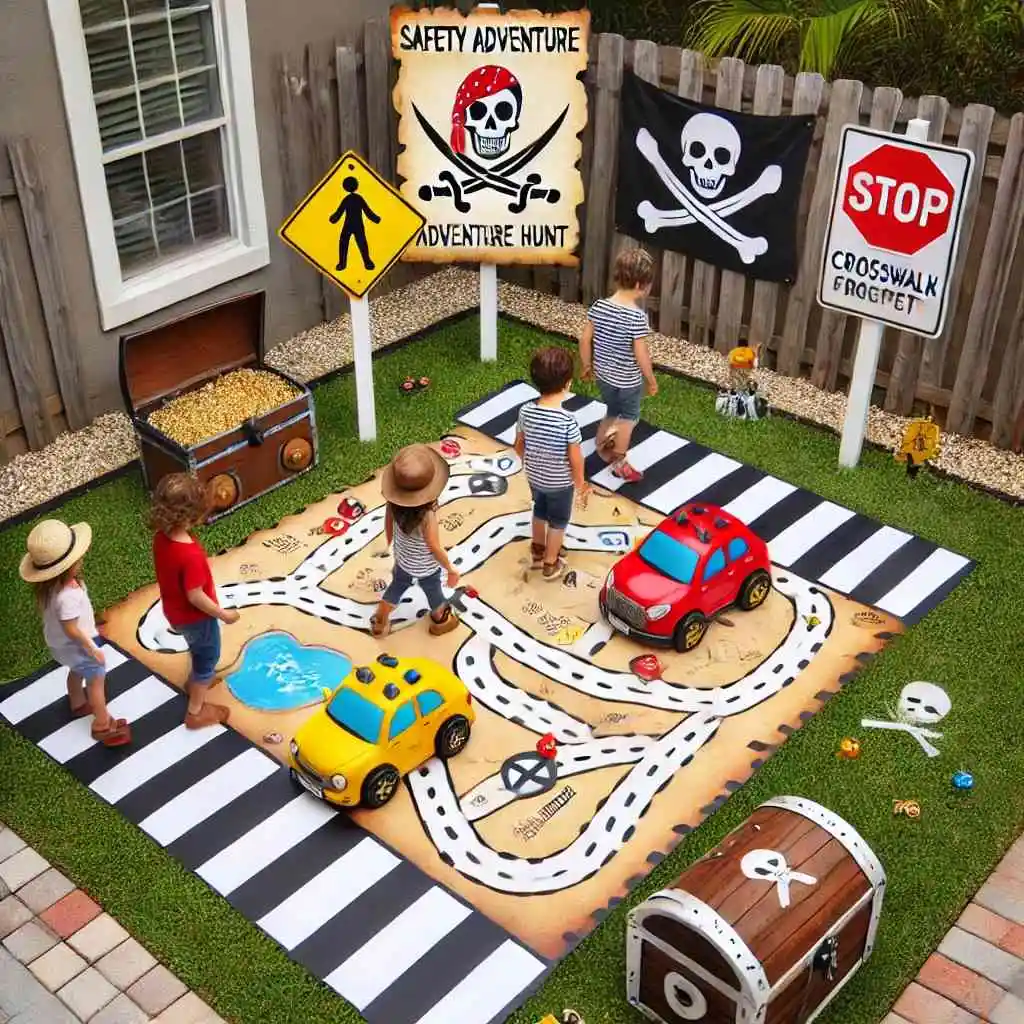
Start by picking a theme that your kids enjoy. Maybe they love pirates, superheroes, or jungle explorers. Use this theme to create a storyline that will captivate their imagination. For example, if you choose a pirate theme, you could create a story about finding a lost treasure while learning about safety along the way.
Next, decide on the safety tips you want to include. Think about the areas where your kids could use a bit more knowledge or practice. This could be anything from crossing the street safely to understanding what to do in an emergency. Write down these tips and think about how you can incorporate them into the adventure.
Setting Up the Adventure Hunt
Once you have your theme and safety tips, it’s time to set up the adventure. Create clues and challenges that will lead your kids from one location to another. Each stop on the hunt should include a safety lesson. For example, you could have a clue that leads to a crosswalk and teach them the importance of looking both ways before crossing.
Make the clues fun and engaging. You could write rhyming riddles, create simple puzzles, or even use a map with marked locations. The key is to make each step of the adventure exciting so your kids stay engaged and eager to learn.
Incorporating Safety Lessons
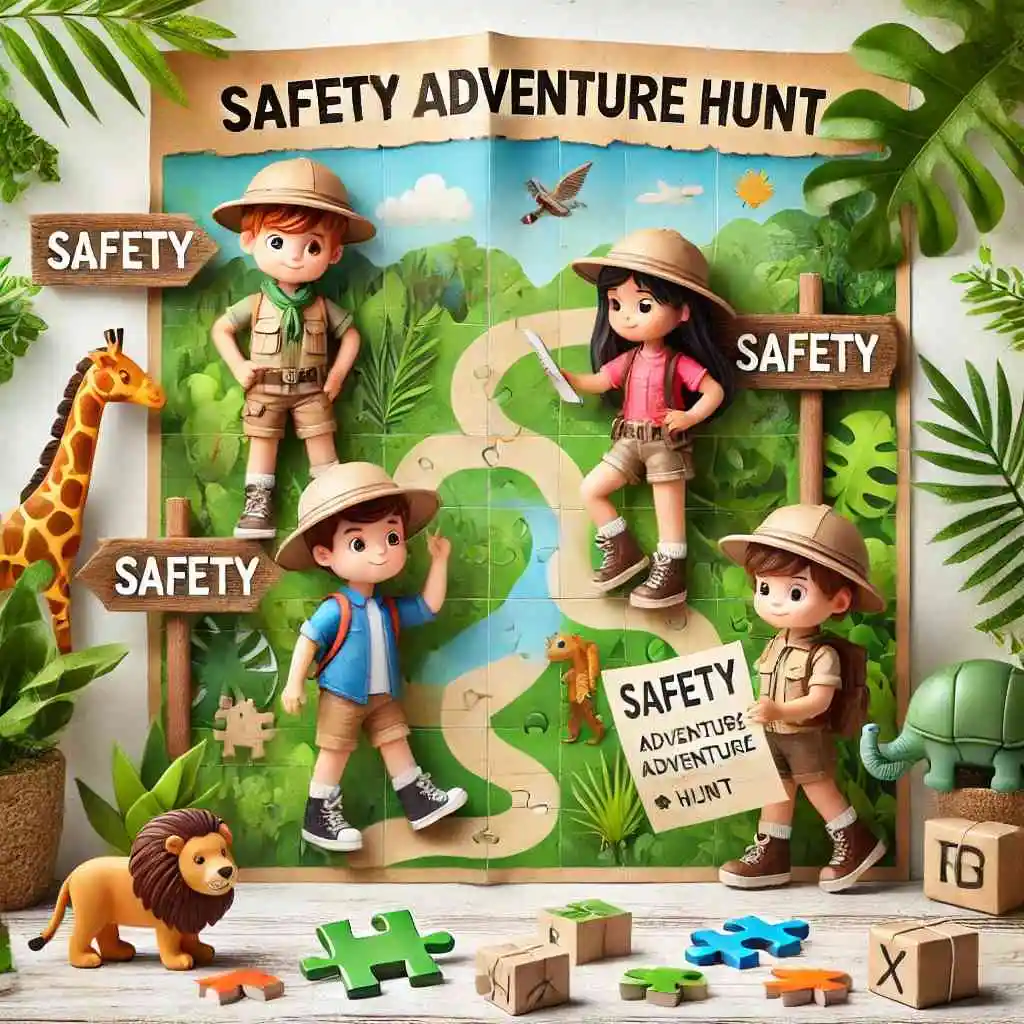
At each stop, present a safety lesson in a fun and interactive way. If you’re teaching about crossing the street, you could set up a mini crosswalk in your backyard. Use toy cars and ask your kids to demonstrate how they would safely cross the street. Reinforce the lesson by explaining why it’s important to stop, look, and listen before crossing.
For teaching about stranger danger, you could create a scenario where they meet a friendly character who asks for help. Teach your kids the importance of not talking to strangers and what to do if someone approaches them. Role-playing these situations can help them understand and remember the safety tips better.
Making It Fun and Rewarding
A key to a successful safety adventure hunt is making it fun and rewarding. You can use small prizes or rewards at each stop to keep your kids motivated. These could be stickers, small toys, or even a piece of the “treasure” they’re hunting for. The final prize could be something special that ties into the theme, like a pirate hat or a superhero cape.
Involve your kids in the preparation process as well. Let them help create the clues or set up the locations. This involvement can increase their excitement and investment in the adventure. Plus, it gives them a sense of accomplishment once they complete the hunt.
Adapting to Different Ages
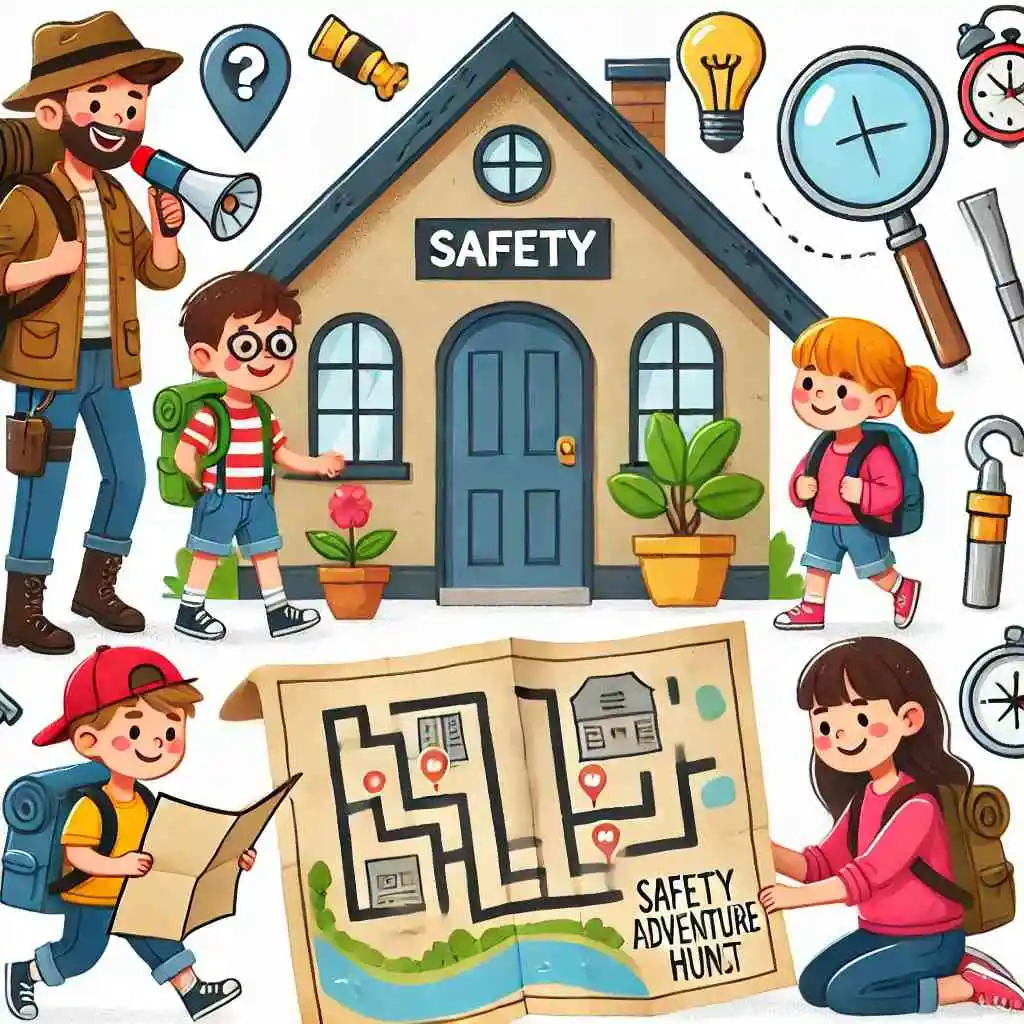
You can tailor the complexity of the adventure hunt to suit your kids’ ages. For younger children, keep the clues simple and the safety lessons basic. Use more visual aids and physical activities to keep them engaged. For older kids, you can make the clues more challenging and introduce more complex safety concepts.
No matter the age, always ensure that the lessons are age-appropriate and understandable. The goal is to make learning about safety enjoyable and memorable, not overwhelming or confusing.
Conclusion: A Fun Way to Learn
A safety adventure hunt is a creative and effective way to teach your kids important safety tips. By combining fun, adventure, and learning, you can help your children develop the skills they need to stay safe. Plus, it’s a great way to spend quality time together and create lasting memories.
So, gather your supplies, put on your creative hat, and start designing your very own safety adventure hunt today. Your kids will thank you for the fun and the valuable lessons they’ll carry with them.
Role-Playing with Favorite Characters
When it comes to teaching kids about safety, role-playing with their favorite characters can be incredibly effective. It’s not only educational but also a whole lot of fun. Imagine turning safety lessons into exciting adventures with beloved friends like Guy the Guardian Gecko and Cesar the Clever Cat. By involving these characters, you make learning about safety more relatable and engaging for children. Here’s how you can start this playful and educational journey with your kids.
Making Safety Fun with Guy and Cesar
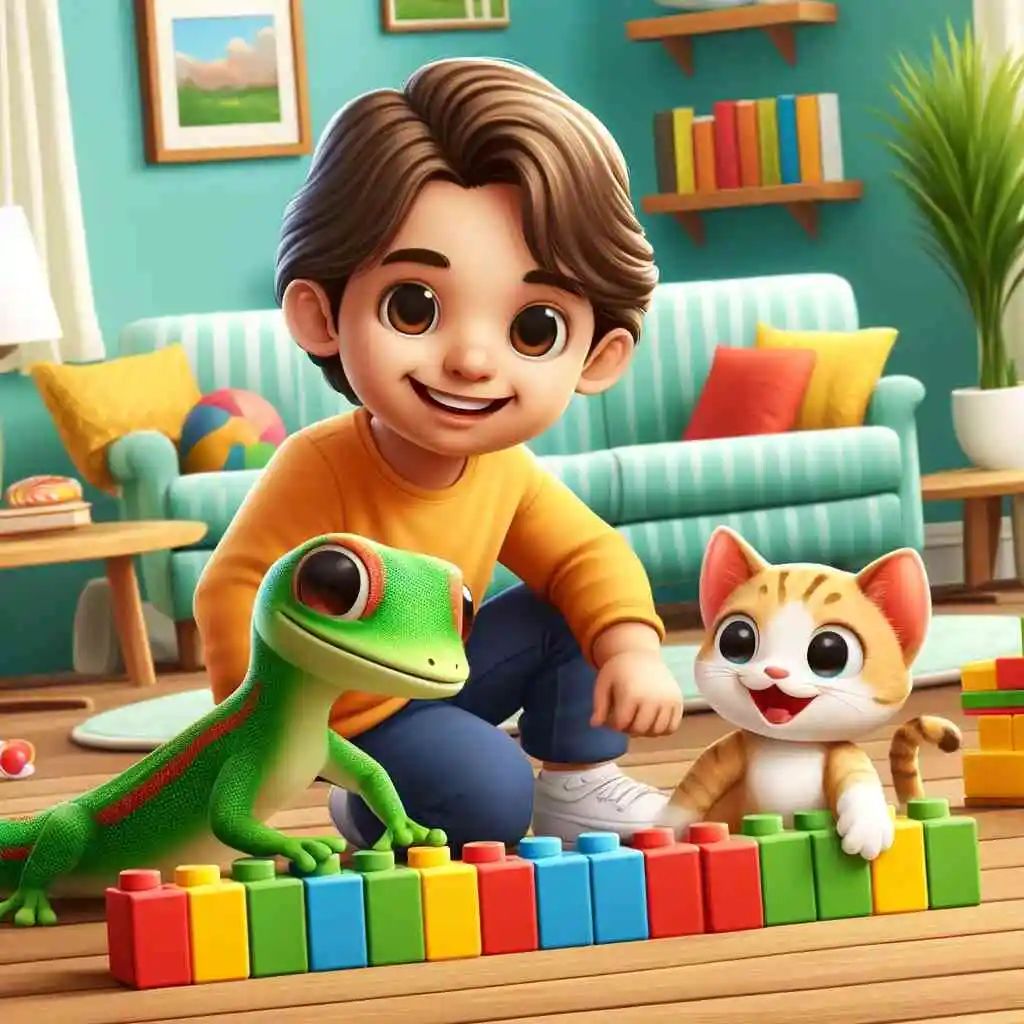
One of the best ways to teach children about safety is by making the lessons fun and engaging. Guy the Guardian Gecko and Cesar the Clever Cat can be your perfect partners in this mission. You can create scenarios where Guy and Cesar face different safety challenges, and your child helps them navigate through these situations. For example, you might set up a mini obstacle course in your living room, where your child helps Guy and Cesar find safe paths and avoid hazards.
Another great idea is to use props and toys to enhance the experience. You could use toy cars, building blocks, or even stuffed animals to create a small town or playground. Then, guide your child as they role-play with Guy and Cesar, teaching them how to cross the street safely, avoid talking to strangers, or stay safe while playing. This hands-on approach makes safety lessons memorable and enjoyable for your child.
Encouraging Creative Problem-Solving
Role-playing with favorite characters like Guy and Cesar can also encourage creative problem-solving. When your child is actively involved in these scenarios, they start thinking critically about how to handle different situations. For instance, you could create a story where Guy and Cesar are exploring a park, and they come across a situation where they need to find a safe way home. Ask your child to come up with ideas and solutions to help their favorite characters. This not only teaches safety but also fosters creativity and critical thinking skills.
You can take this a step further by incorporating simple puzzles or challenges within the role-playing activity. Maybe Guy and Cesar need to find clues to unlock a safe path, or they have to remember important safety rules to get past certain obstacles. These little challenges keep your child engaged and make the learning process even more interactive and enjoyable.
Building Confidence Through Role-Play
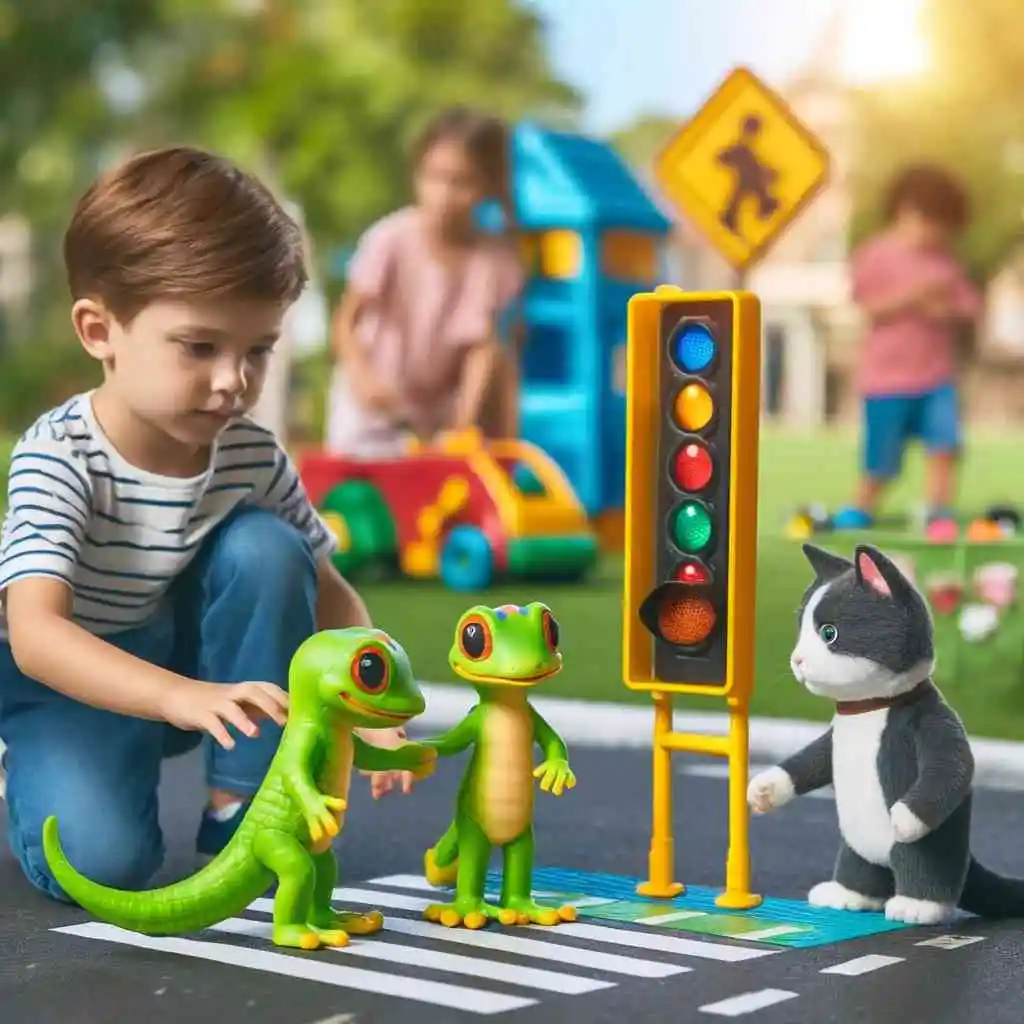
Another fantastic benefit of role-playing with favorite characters is that it helps build your child’s confidence. When children see their beloved characters, like Guy the Guardian Gecko and Cesar the Clever Cat, facing and overcoming safety challenges, it inspires them to believe they can do the same. It gives them a sense of empowerment and encourages them to take an active role in their own safety.
You can reinforce this confidence by praising your child’s efforts and solutions during the role-playing activities. Positive reinforcement goes a long way in making children feel proud of their achievements. You might say something like, “Great job helping Guy and Cesar find the safe way home! You really know your safety rules.” This boosts their self-esteem and reinforces the importance of the lessons they are learning.
Making Role-Playing a Regular Activity
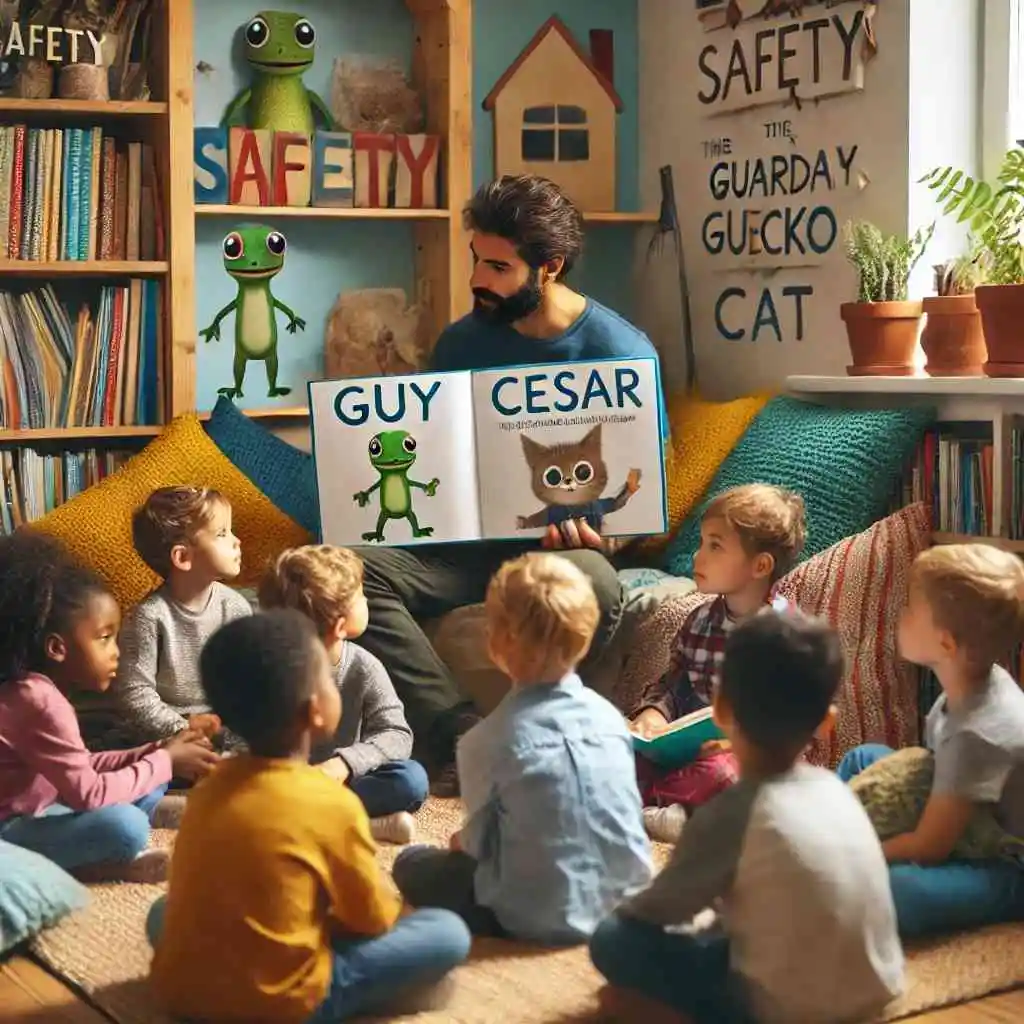
To maximize the benefits of role-playing with favorite characters, make it a regular part of your routine. Set aside some time each week to engage in these fun and educational activities with your child. The consistency helps reinforce the safety lessons and keeps them fresh in your child’s mind. Plus, it’s a wonderful way to spend quality time together, building memories and strengthening your bond.
You can vary the scenarios and challenges to keep things interesting. Maybe one week, Guy and Cesar are learning about fire safety, and the next, they’re exploring water safety or learning how to react in an emergency. By covering different topics, you ensure that your child gains a well-rounded understanding of safety in various contexts.
Involving Friends and Family
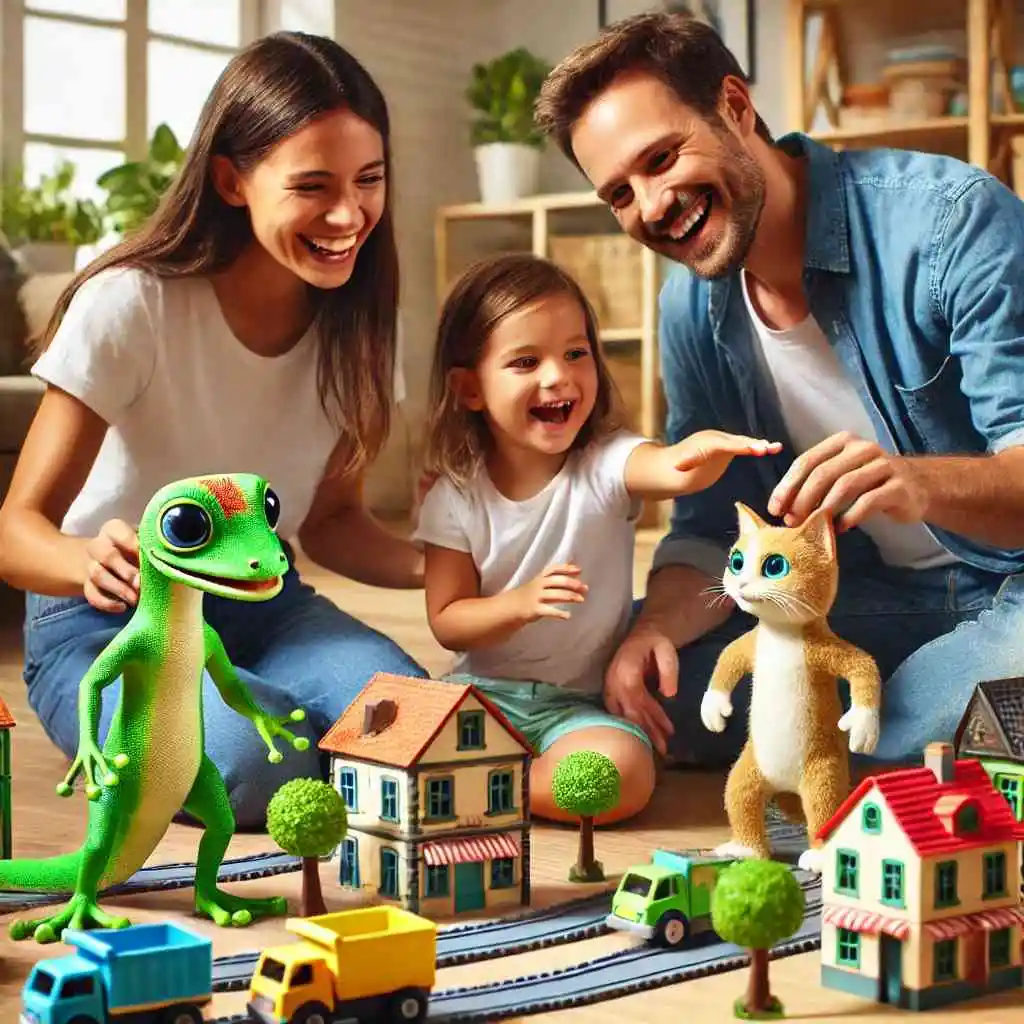
Role-playing with favorite characters doesn’t have to be limited to just you and your child. Involving friends and family can add a new level of excitement and learning. Invite your child’s friends over for a role-playing session, or include siblings and other family members. This creates a collaborative environment where children can learn from each other and share their ideas.
You might even consider organizing a small safety-themed playdate or party. Set up different stations with various safety challenges and let the kids rotate through them, helping Guy and Cesar along the way. This not only makes learning fun but also fosters a sense of community and teamwork among the children.
Creating Lasting Lessons
Ultimately, the goal of role-playing with favorite characters is to create lasting safety lessons that your child will carry with them. By integrating beloved characters like Guy the Guardian Gecko and Cesar the Clever Cat into these activities, you make the lessons more relatable and memorable. Children are more likely to remember and apply what they’ve learned when they associate it with their favorite characters and fun experiences.
So, gather your props, set the stage, and let the adventures with Guy and Cesar begin. Watch as your child learns, grows, and gains confidence in their ability to stay safe in various situations. With these playful and educational activities, you’re not just teaching safety—you’re creating cherished memories and invaluable life skills for your child.
